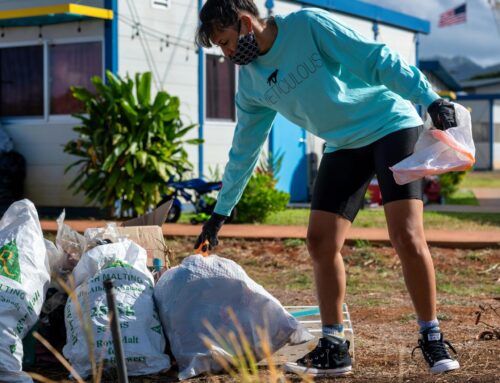Picture yourself driving through a busy Albuquerque intersection – maybe you’re heading down San Mateo, crossing Montgomery during rush hour. In a split second, another vehicle slams into your car’s side. This type of crash, known as a T-bone accident, ranks among the most dangerous collisions on New Mexico roads. At Roadrunner Law Firm, we see how these side-impact crashes change lives in an instant, leaving families to deal with serious injuries and mounting medical bills. Who is at fault for T-Bone accidents? Of course, the answer is a complicated “it depends.”
Really there’s only 3 or 4 scenarios where T-bone crashes happen. Here’s a breakdown so you can find out who is at fault in your T-bone car accident:
Why T-Bone Accidents Happen: Common Causes on New Mexico Roads
Let’s look at the main reasons these devastating side-impact crashes occur in our state. Imagine you’re at a four-way intersection in downtown Albuquerque. Multiple factors could lead to a T-bone collision:
Misjudged Left Turns: You might think you have time to complete that left turn, but misjudging the speed or distance of oncoming traffic could end in a serious crash. The straight-traveling car has the right-of-way in most cases. (see NM Stat § 66-7-328 (2018) for the actual wording of the law)
Red Light Violations: Running red lights causes many T-bone crashes at major intersections. A driver racing through a yellow light that turns red before they clear the intersection puts everyone at risk. Even a few seconds can mean the difference between a safe crossing and a devastating collision. If the light was red before the driver entered the intersection, that driver is probably at fault for the T-bone crash.
Distracted Driving: A driver checking their phone while approaching an intersection might miss a red light or fail to notice a car turning left. Conversely, a person checking their phone while turning left may fail to see a motorcycle or oncoming vehicle and pull out in front of them. In the time it takes to read a text message, a car traveling at 45 mph covers the length of a football field. Anything could happen. Being a distracted driver doesn’t automatically put you at fault for a T-bone car crash, but being distracted can cause you to make the mistake that DOES make you at fault.
Speed and Reckless Driving: Excessive speed makes it harder for drivers to react to changing traffic signals or unexpected turns. On busy streets like Paseo del Norte or Coors Boulevard, speeding through intersections increases both the risk and severity of T-bone crashes. Speeding does not always make you at fault. A speeding car going straight always has the right-of-way versus a left-turning car, for example. Police love to blame the speeding driver (we’ve also noticed police tend to blame motorcycle riders even when they aren’t at fault.) but driving over the speed limit doesn’t give the left-turning driver the right to turn in front of you.

Right-of-Way Rules That Matter in New Mexico T-Bone Crashes
The rules about who has the right-of-way in New Mexico might seem simple on paper, but real-world situations often get complicated. Let’s break down what the law says and how it affects your case:
Basic Right-of-Way for Left Turns In most situations, drivers going straight through an intersection have the right-of-way over those turning left. Why? Because the straight-traveling driver can’t read minds – they shouldn’t have to guess whether someone might turn in front of them. This rule helps keep traffic flowing and reduces crash risks at busy intersections.
When Right-of-Way Rules Flip But here’s where things get interesting: the rules can change completely if a driver runs a red light. Example: You’re making a left turn on a yellow light that’s about to turn red. You start your turn as the light changes, but another driver guns it through the now-red light and hits your car. In this case, they might bear fault for the crash – even though you were turning left.
Multiple-Lane Complications On wider roads like Coors Boulevard or Montgomery, multiple lanes add another layer to right-of-way rules. If you’re turning left across three lanes, you need a clear view of each one. A car in the nearest lane might stop to let you turn, but that doesn’t mean the other lanes will do the same. “Helpful” drivers can cause accidents by behaving in unexpected ways while trying to be nice. Yikes.
Protected vs. Unprotected Left Turns New Mexico law treats protected left turns (with a green arrow) differently from unprotected ones (with just a regular green light). With a green arrow, you have explicit right-of-way. But with a regular green light, you must yield to oncoming traffic – and the burden of proving you had a clear path falls on you if there’s a crash.
Need help figuring out who had the right-of-way in your T-bone crash? Call Roadrunner Law Firm at 505-444-4321. Our team of car accident lawyers knows New Mexico traffic laws inside and out, and we’ll give you straight answers about your case.

When Fault Isn’t Black and White: New Mexico’s Comparative Negligence Rules
Here’s a reality of T-bone crashes in New Mexico – sometimes both drivers play a role in what happened. That’s where our state’s “pure comparative negligence” law comes into play, and it could directly affect your case.
How Comparative Negligence Works in Real Life Let’s say you’re turning left at the intersection of Central and Wyoming. You begin your turn on a yellow light, but you’re moving a bit slowly. Meanwhile, the oncoming driver is going 15 mph over the speed limit. If a crash happens, both actions might contribute to the collision.
In New Mexico, you can still recover damages even if you bear some fault – that’s what makes our law “pure” comparative negligence. Here’s what that means for your case:
Breaking Down the Numbers Think about it this way: If your total damages come to $100,000, but you’re found to be 40% at fault, you could still recover $60,000. The math is straightforward – your compensation gets reduced by your percentage of fault. No matter what percentage of fault you carry, you can still seek compensation (unlike some other states that cut off recovery at 50% fault).
Common Shared-Fault Scenarios:
- You turned left with a partially blocked view
- The other driver was speeding or distracted
- One driver misjudged the yellow light timing
- Weather conditions affected both drivers’ visibility
- Both drivers assumed they had the right-of-way
Don’t let the insurance company pressure you into accepting more fault than you deserve. At Roadrunner Law Firm, we dig deep into the evidence to make sure fault gets assigned correctly. Call us at 505-444-4321 – we’ll analyze your case and fight for every dollar you deserve.



